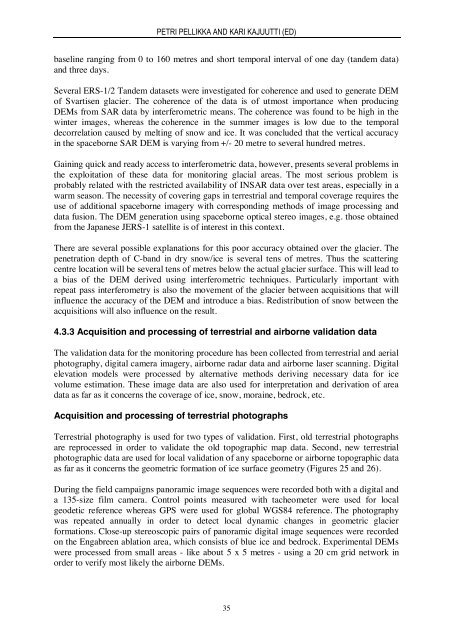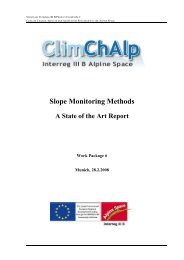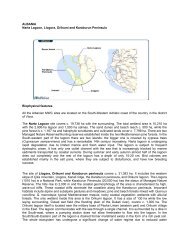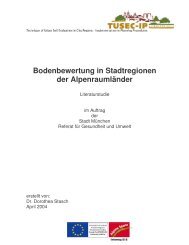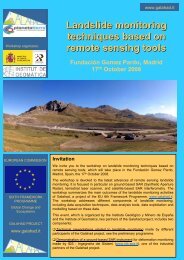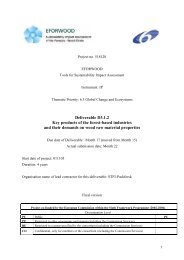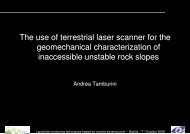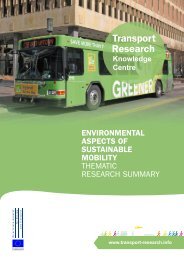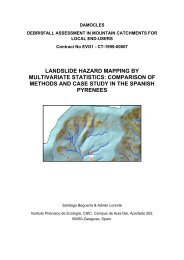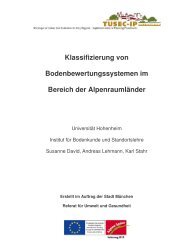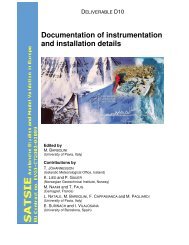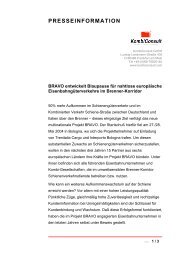1 Background - mountain.PROJECTS
1 Background - mountain.PROJECTS
1 Background - mountain.PROJECTS
You also want an ePaper? Increase the reach of your titles
YUMPU automatically turns print PDFs into web optimized ePapers that Google loves.
PETRI PELLIKKA AND KARI KAJUUTTI (ED)baseline ranging from 0 to 160 metres and short temporal interval of one day (tandem data)and three days.Several ERS-1/2 Tandem datasets were investigated for coherence and used to generate DEMof Svartisen glacier. The coherence of the data is of utmost importance when producingDEMs from SAR data by interferometric means. The coherence was found to be high in thewinter images, whereas the coherence in the summer images is low due to the temporaldecorrelation caused by melting of snow and ice. It was concluded that the vertical accuracyin the spaceborne SAR DEM is varying from +/- 20 metre to several hundred metres.Gaining quick and ready access to interferometric data, however, presents several problems inthe exploitation of these data for monitoring glacial areas. The most serious problem isprobably related with the restricted availability of INSAR data over test areas, especially in awarm season. The necessity of covering gaps in terrestrial and temporal coverage requires theuse of additional spaceborne imagery with corresponding methods of image processing anddata fusion. The DEM generation using spaceborne optical stereo images, e.g. those obtainedfrom the Japanese JERS-1 satellite is of interest in this context.There are several possible explanations for this poor accuracy obtained over the glacier. Thepenetration depth of C-band in dry snow/ice is several tens of metres. Thus the scatteringcentre location will be several tens of metres below the actual glacier surface. This will lead toa bias of the DEM derived using interferometric techniques. Particularly important withrepeat pass interferometry is also the movement of the glacier between acquisitions that willinfluence the accuracy of the DEM and introduce a bias. Redistribution of snow between theacquisitions will also influence on the result.4.3.3 Acquisition and processing of terrestrial and airborne validation dataThe validation data for the monitoring procedure has been collected from terrestrial and aerialphotography, digital camera imagery, airborne radar data and airborne laser scanning. Digitalelevation models were processed by alternative methods deriving necessary data for icevolume estimation. These image data are also used for interpretation and derivation of areadata as far as it concerns the coverage of ice, snow, moraine, bedrock, etc.Acquisition and processing of terrestrial photographsTerrestrial photography is used for two types of validation. First, old terrestrial photographsare reprocessed in order to validate the old topographic map data. Second, new terrestrialphotographic data are used for local validation of any spaceborne or airborne topographic dataas far as it concerns the geometric formation of ice surface geometry (Figures 25 and 26).During the field campaigns panoramic image sequences were recorded both with a digital anda 135-size film camera. Control points measured with tacheometer were used for localgeodetic reference whereas GPS were used for global WGS84 reference. The photographywas repeated annually in order to detect local dynamic changes in geometric glacierformations. Close-up stereoscopic pairs of panoramic digital image sequences were recordedon the Engabreen ablation area, which consists of blue ice and bedrock. Experimental DEMswere processed from small areas - like about 5 x 5 metres - using a 20 cm grid network inorder to verify most likely the airborne DEMs.35


